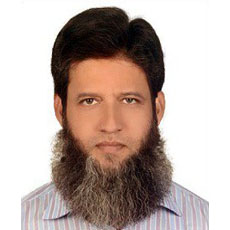Electronics and Photonics
Electronics and Photonics
The field of Electronics and Photonics within the Electrical and Electronic Engineering department is a dynamic and transformative realm at the forefront of technological innovation. This research area encompasses a spectrum of exploration, ranging from fundamental first-principle studies to advanced applications, revolutionizing how we perceive and harness light and materials.
Researchers in Electronics and Photonics delve into the intricacies of material properties at the nanoscale, unlocking the potential for unprecedented device functionalities. Through meticulous first-principle studies, they decode the fundamental behaviors of materials, enabling the design of novel electronic and photonic components with enhanced performance and efficiency.
Nanophotonics and plasmonics form the cutting-edge frontier of this research, focusing on manipulating light at scales smaller than its wavelength. By engineering materials and structures at nanoscale dimensions, researchers create platforms for ultrafast data transmission, high-resolution imaging, and compact sensing devices. Plasmonics, in particular, exploits the collective oscillations of electrons to enable enhanced light-matter interactions, driving breakthroughs in energy conversion and information processing.
Another groundbreaking facet of Electronics and Photonics is neuromorphic computing, where researchers draw inspiration from the brain's architecture to develop energy-efficient computing paradigms. By emulating neural networks, they pave the way for advanced artificial intelligence systems, capable of rapid and low-power computations for tasks ranging from pattern recognition to complex decision-making.
List of Faculty Members with Primary Affiliation
Dr. Quazi Deen Mohd Khosru
ProfessorDr. Md. Shafiqul Islam
Professor- VLSI Circuits and Systems
- Nanotechnology
- Renewable Energy Systems (Photovoltaics)
- Electronic Devices
- Electronic Materials and Processing
Dr. A. B. M. Harun-Ur-Rashid
Professor- VLSI Design
- VLSI System with Novel Devices
- Power Electronics Drive
- Hardware Security
- Neuromorphic Chip Design
Dr. Sharif Mohammad Mominuzzaman
ProfessorDr. Mohammad Jahangir Alam
Professor- Power Electronics
- Renewable Energy Systems
- Electronic Devices
Dr. Md. Nasim Ahmed Dewan
Professor- Modeling of low pressur plasma
- Multifrequency RF plasma
- IED in RF plasma
Dr. Muhammad Anisuzzaman Talukder
ProfessorDr. Md. Zahurul Islam
Professor- Nanophotonics and Plasmonics
- Integrated Optics
- Sensors; Biophotonics and Biosensors
- Photovoltaics
- Microfluidics
- Electrical and Fire Safety
Dr. Apratim Roy
Professor- Nanoelectronic Circuits
- Electronic Devices
- Renewable Systems
Dr. Mahbub Alam
Professor- Nanoelectronics devices NanoFETs
- 2D Materials-Quantum Materials-Topological Properties of Materials
- Quantum Transport-NEGF
- Electron Photon Interaction
- Wireless Charging of Electrical Vehicles
Dr. Ahmed Zubair
ProfessorDr. Hamidur Rahman
Associate Professor- Hardware Security
- VLSI Testing
- Effect of Material and Geometry on Device
- Renewable Energy
- Power System Stability
Dr. Shaikh Asif Mahmood
Associate ProfessorDr. Sajid Muhaimin Choudhury
Associate Professor- Nanophotonics
- Plasmonics
- Embedded Systems Design
- Internet-of-Things
- Quantum Computation
Dr. Nadim Chowdhury
Assistant Professor- Semiconductor Devices
- Wide band-gap
- Power Electronics
- RF
- Quantum Computation
Dr. Ehsanur Rahman
Assistant Professor- Next Generation Solar Cells
- Near-field thermophotovoltaics
- Thermophotonic
- High Electron Mobility Transistors (HEMT)
- FET-based biosensors
- First Principles Study
- Fuel cell-based cogeneration systems
- Thermoelectric devices
- Thermionic solar cells
- Novel Hybrid Energy Conversion Devices
Dr. Zabir Ahmed
Assistant Professor- Nanobiophotonics
- Nanophotonics
- Plasmonics
- Neural Recording
- Neural Interfaces
- Integrated Photonics
Dr. Orchi Hassan
Assistant Professor- Nanoelectronics
- Spintronics
- Neuromorphic Computing
Communication and Signal Processing Electrical Energy and Power Systems (EEPS)


















